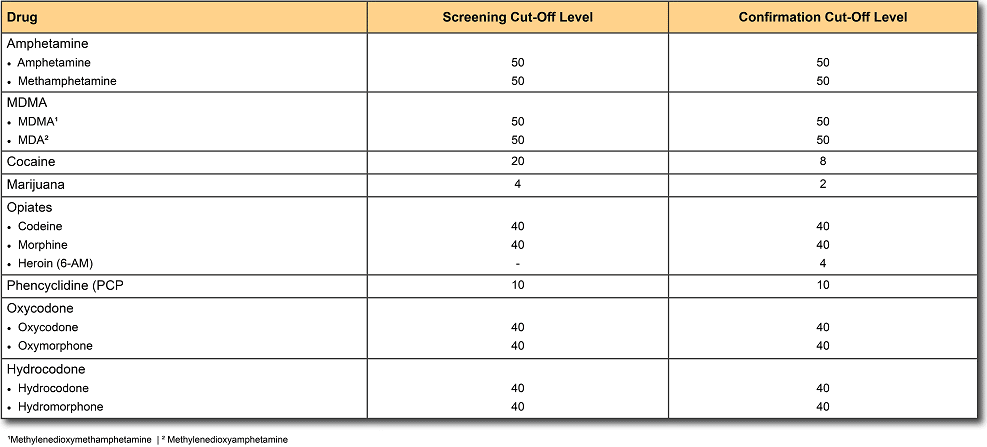Navigating the world of drug testing can feel like traversing a complex maze, especially when faced with unfamiliar terms and procedures․ One common type of screening is the 8 panel drug test, which is designed to detect the presence of eight specific substances in a person’s system․ Understanding the nuances of an 8 panel drug test is crucial for both employers and individuals undergoing testing, ensuring accurate results and fair outcomes․ This comprehensive guide aims to demystify the process, outlining what substances are tested for, the accuracy of the test, and what to expect during the collection and analysis phases․
What Substances Does an 8 Panel Drug Test Screen For?
An 8 panel drug test typically screens for the following substances․ The specific substances tested may vary slightly depending on the laboratory and the needs of the requesting party, but the following list is representative:
- Amphetamines: Including amphetamine and methamphetamine․
- Barbiturates: Such as phenobarbital and secobarbital․
- Benzodiazepines: Including diazepam and alprazolam․
- Cocaine: Detected as benzoylecgonine;
- Opiates: Including morphine, codeine, and heroin metabolites․
- Phencyclidine (PCP): Also known as “angel dust․”
- Methadone: A synthetic opioid analgesic․
- Marijuana (THC): Detected as THC-COOH․
Accuracy and Reliability
The accuracy of an 8 panel drug test is generally high, especially when performed by certified laboratories using established protocols․ However, no test is 100% foolproof, and false positives or false negatives can occur․ Factors that can influence the accuracy of the test include:
- Medication Use: Certain prescription and over-the-counter medications can trigger false positives․
- Cross-Reactivity: Similar chemical structures in different substances can lead to inaccurate results․
- Adulteration: Attempts to tamper with the sample can compromise the integrity of the test․
- Laboratory Errors: Though rare, errors in the testing process can occur․
What to Expect During the Testing Process
The typical 8 panel drug test involves collecting a urine sample․ Here’s a general overview of what to expect:
Sample Collection
You will be asked to provide a urine sample in a private restroom․ The collector may take steps to ensure the sample is not tampered with, such as adding blue dye to the toilet water and instructing you to leave your belongings outside the restroom․
Chain of Custody
The sample will be sealed and labeled with a unique identifier․ A chain of custody form will be initiated to track the sample from collection to analysis․ This ensures the integrity of the sample and its traceability․
Laboratory Analysis
The sample will be sent to a certified laboratory for analysis․ The lab will use immunoassay screening techniques to initially detect the presence of drugs․ Any positive results will be confirmed using more sensitive methods, such as gas chromatography-mass spectrometry (GC-MS) or liquid chromatography-mass spectrometry (LC-MS)․
Understanding the 8 panel drug test is essential for anyone involved in the process․ By knowing what substances are tested for, the accuracy of the test, and what to expect during collection and analysis, you can approach the situation with confidence and clarity․
Interpreting Results and Next Steps
Once the laboratory analysis is complete, the results are typically reported as either “negative” or “positive” for each substance tested․ A negative result indicates that the substance was not detected above the established cutoff levels․ A positive result, on the other hand, suggests the presence of the substance․
However, a positive result does not automatically imply drug use․ It’s crucial to consider several factors before drawing conclusions:
- Legitimate Medical Use: As mentioned earlier, certain medications can trigger positive results․ If you are taking any prescription or over-the-counter drugs, inform the testing facility or medical review officer (MRO) beforehand․ The MRO is a licensed physician who reviews drug test results and communicates with individuals to verify legitimate medical explanations for positive findings․
- Passive Exposure: In some cases, passive exposure to certain substances, such as marijuana, can lead to detectable levels in urine․ However, these levels are usually low and can be differentiated from those resulting from direct use․
- Confirmation Testing: Remember that positive screening results should always be confirmed with more specific and sensitive methods like GC-MS or LC-MS․ This helps to minimize the risk of false positives․
If You Receive a Positive Result
If you receive a positive drug test result, you have the right to request a retest of the original sample at your own expense․ It’s also advisable to consult with an MRO to discuss your medication history and any other factors that might have influenced the result․ The MRO can help determine whether the positive result is genuine or due to other factors․
Preventative Measures and Best Practices
To ensure accurate and fair drug testing outcomes, both employers and individuals should adhere to certain best practices:
- For Employers:
- Develop a clear and comprehensive drug testing policy that complies with all applicable laws and regulations․
- Use certified laboratories and qualified collection personnel․
- Provide employees with adequate notice of drug testing requirements․
- Respect employee privacy and confidentiality․
- Implement a fair and consistent disciplinary process for positive drug test results․
- For Individuals:
- Be aware of your employer’s drug testing policy․
- Disclose any medications you are taking to the testing facility or MRO․
- Avoid using substances that are prohibited by your employer’s policy․
- If you have concerns about a drug test result, seek clarification from the MRO or a qualified healthcare professional․
Ultimately, understanding the intricacies of an 8 panel drug test, from its purpose to the interpretation of results, empowers you to navigate the process with confidence and make informed decisions․ Remember to always prioritize transparency, accuracy, and fairness in all aspects of drug testing․ The concluding thought to consider is that a clear understanding of the 8 panel drug test, and its implications, contributes significantly to creating a safe and compliant environment․

